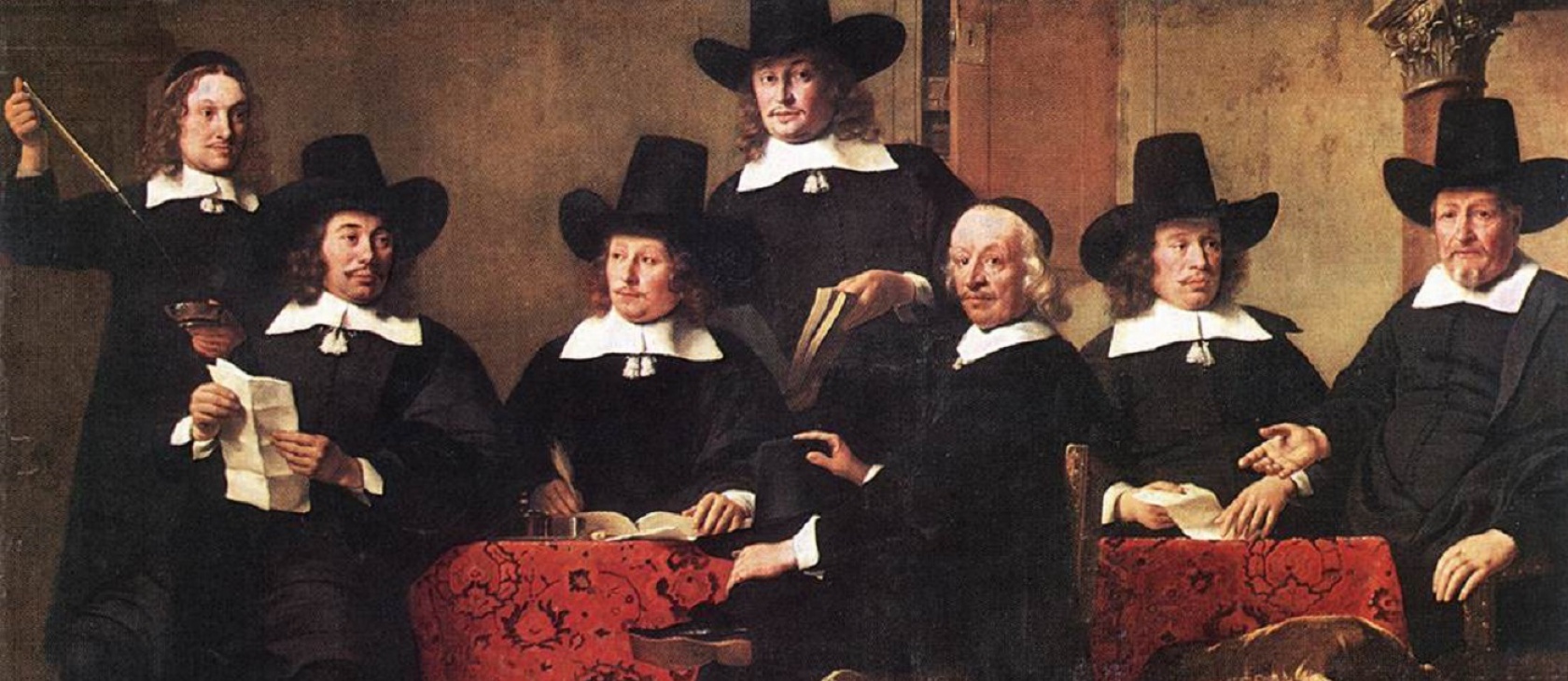Despite the fact that there is little evidence for this proposition, it is widely held that deregulation of financial markets caused the financial crisis. Given that it is so widely believed, perhaps it is not surprising that the response from the Roman Catholic Church should involve calls for more regulation. For example, in Caritas in Veritate, it is stated: “Both the regulation of the financial sector, so as to safeguard weaker parties and discourage scandalous speculation, and experimentation with new forms of finance, designed to support development projects, are positive experiences that should be further explored and encouraged, highlighting the responsibility of the investor.”
The Church embraces state regulation
However, despite the Church’s teaching on the principle of subsidiarity, the question is rarely asked, “Who should regulate the financial sector?” Church documents tend to suggest that the state should regulate financial markets, and there is little recognition that it is even possible for regulatory institutions to develop within markets themselves ,or within civil society. Indeed, the recent Vatican letter Oeconomicae et pecuniariae quaestiones, quoting an earlier Vatican letter on the financial crisis, suggested that deregulation leads to a regulatory and institutional vacuum (21).
If only the extraordinary history of regulatory institutions that arise from within markets themselves were appreciated, there might be less of a tendency to rush to the assumption that government bureaucracies should be the main regulators of financial markets.
But problems in financial markets are not necessarily solved by bureaucratic agencies churning out rules and regulations. In 2011, the UK financial regulator issued regulations, guidance, advice, discussion documents or consultations totalling 4.3 million words – more than five times the length of the Bible. This will not help anybody. We need another approach.
In areas outside the financial sector, the Church has often stressed the importance of non-governmental institutions – for example in Centesimus Annus and especially in Quadragesimo Anno.
There is just a glimpse of a recognition of this aspect of Church teaching in the above-mentioned Vatican letter. Immediately after arguing that government deregulation of financial markets led to an institutional vacuum, the letter did add (in apparent contradiction):
Numerous associations emerging from civil society represent in this sense a reservoir of consciousness, and social responsibility, of which we cannot do without. Today as never before we are all called, as sentinels, to watch over genuine life and to make ourselves catalysts of a new social behavior, shaping our actions to the search for the common good, and establishing it on the sound principles of solidarity and subsidiarity.
If only the extraordinary history of regulatory institutions that arise from within markets themselves were appreciated, there might be less of a tendency to rush to the assumption that government bureaucracies should be the main regulators of financial markets.
The history of self-regulating markets
Until 1986 in the UK, and in earlier times in other countries, securities markets were more or less entirely regulated by exchanges These private bodies regulated the behaviour of investors, dealers, advisers and companies whose shares were quoted on the exchange.
In Britain, modern stock exchanges first developed in coffee shops. When the exchange first had an independent home at the beginning of the nineteenth century, it had restrictions on membership and tacit rules. For example, when delayed settlement was introduced to increase liquidity, those who did not settle their accounts would be labelled “lame duck” on a board and could be prevented from acting as brokers.
Over time, exchanges developed codified rules. These included rules for those trading on the exchange and rules for companies that wished to be listed on the exchange. It was in the interest of companies that rule-making was robust because an orderly exchange should enable companies to raise capital at lower cost.
It was also in the interest of members of the exchange that trade should be regulated, because it would reduce the costs of monitoring, reduce losses to fraud, and so on. A codified rule book covering default and settlement, arbitration, and bad debts was introduced in the London exchange in 1812. There were rules relating to the quotation of prices and also relating to general behaviour of members. These were designed to increase transparency. The exchange also dealt with problems caused by the misuse of insider information. The quotation of securities was regulated from 1844 onwards.
The London stock exchange was essentially a club or society which could determine its own rules for membership, for the behaviour of its members, and for companies the shares of which were traded on the exchange. Sometimes these were stringent, such as those which prevented conflicts of interest by prohibiting members from both trading on their own book (jobbing) and providing advice (broking).
The recent Vatican letter and also Caritas in Veritate emphasised what should be the core of Catholic social teaching when it comes to finance and economics – the requirement for all participants in markets to behave ethically and virtuously.
The effectiveness of this system of market-generated regulation was verified by a parliamentary inquiry. In 1877-78 a Royal Commission held an inquiry into the stock exchange and concluded that the exchange’s rules “had been salutary to the interests of the public” and that the exchange had acted “uprightly, honestly, and with a desire to do justice.” It further commented that the exchange’s rules were “capable of affording relief and exercising restraint far more prompt and often satisfactory than any within the read of the courts of law.”
Stock exchanges are not the only examples of private rule-making institutions in financial markets. Professional bodies blossomed in mid-to-late nineteenth century financial markets. For example, in the U.S. from 1875 to 1930 there was very little regulation of accounting. Indeed, publicly quoted firms did not have to be audited, though many were. However, by 1926, 90 per cent of companies quoted on the New York Stock Exchange had audited accounts, and there were professional bodies of accountants with their own rules who were responsible for auditing in many cases.
Over-the-counter derivatives business is almost wholly the preserve of wholesale investors but, interestingly, those markets do not go unregulated, even though they do not attract the same regulatory interest from governments as consumer-facing markets.
Theory and practice suggest that there are problems with governments acting as regulators, as they simply churn out more and more rules without restraint.
These markets are regulated by a private body, the International Swaps and Derivatives Association (ISDA). ISDA’s mission is: “[to foster] safe and efficient derivatives markets to facilitate effective risk management for all users of derivative products.” It achieves this in a number of ways all of which involve regulatory functions, such as: “Developing standardized documentation globally to promote legal certainty and maximum risk reduction.” Members have to apply to join and can have their membership revoked.
ISDA members can choose to use the ISDA master agreement which applies to over 90 per cent of over-the-counter derivatives transactions in the world. This represents 90 per cent of outstanding derivatives contracts at the end of 2016 – almost $0.5 quadrillion. In addition, as part of their regulatory function, ISDA also have a dispute resolution procedure (thus circumventing the need to use courts in most instances) and a Credit Derivatives Determinations Committee. The latter uses a set of rules to determine, for example, whether a credit default event has taken place and, thus, counterparties to a derivative contract need to settle.
The Church should enrich the conversation
The recent Vatican letter and also Caritas in Veritate emphasised what should be the core of Catholic social teaching when it comes to finance and economics – the requirement for all participants in markets to behave ethically and virtuously. Recent Vatican letters have also often emphasised the intrinsic benefits of markets but suggested that their shortcomings be addressed through government regulation, especially at the international level.
Theory and practice suggest that there are problems with governments acting as regulators, as they simply churn out more and more rules without restraint. There should be a renewed emphasis in the development of Catholic social teaching on the development of regulatory institutions within markets themselves and on the development of civil society institutions for restraining behaviour in the financial sector. Such bodies are largely ignored by economists, and of course by politicians, who prefer government regulation. The Church could enrich the conversation.




